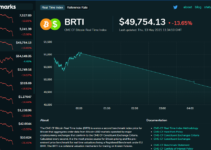For the 30 years I have been involved as a marketer and journalist in the financial industry, banks have remained secure in their position in payments, despite warnings to the contrary. Existing payments systems and reserve currencies may be safe from a future of bitcoins and RMBs for now.
Yet technologies that can lower costs and increase competition by making business connections more direct win in the long run. Digital networking technologies and applications have created remarkably diverse markets of content and commerce, some of which are highly profitable.
Although banks and banking receive much attention, as hardware manufacturers, software developers, ecommerce firms, and app developers nip at the edges of their services, the entire financial services industry is undergoing digital transformation. The FinTech Field of Engagement chart is designed to show just that.
Impetus and inspiration for the chart came from Alexander Pease, a VC at New York-based Union Square Ventures, who took his inspiration from “Disaggregation of Craigslist,”, one of the “cool charts thrown around the startup/VC world.” Pease’s post “Disaggregation of a Bank,” shows a diagram of bank services and lists the startups working to provide those services piece by piece. The post appeared in January 2014, and CB Insights published a follow up to show that the FinTech startups listed in the original post had generated investments in 2014 of nearly $600 million.
The comments to Pease’s post got me to thinking about the industry as a whole. Doug Nelson, a VC associate in FinTech, suggested in his comments.
“the real unbundling is not horizontal (i.e., startups picking off various services that a financial services supermarket used to provide). Rather, the unbundling is a vertical phenomenon (i.e., the separation of front and back office).”
Nelson expanded on those market dynamics in a recent post, Financial Services Unbundling, Revisited.
From a practical standpoint, deal maker and entrepreneur Gareth Wong in his comments suggested a focus on fixing the problems in financial services, and there are many to fix, especially given that the aftermath of the financial crisis is far from complete:
“Disaggregation is key but probably providing a solution that would fix the broken part(s) of the financial/capital market could very well be the lowest hanging fruit/holy grail.”
These comments led me to envision the market as a whole, as a way to chart out the entire field of engagement.
This initial industry diagram shows horizontal channels and functions in the left column and traditional vertical market segments across the top, with their digital FinTech analogs in the same column but on the bottom, below the Mediators. The mediators include organizations that support, enable and perhaps thwart the industry, and they include the financial industry’s regulators.
It is no accident that the new FinTech categories appears below the regulatory line. This will not be the case forever, as both regulators and startups themselves shift positions.
On the consumer-facing segment, banks receive special emphasis, to show that their service delivery crosses most of the vertical markets. This is also designed to acknowledge their vulnerability to disruption, disaggregation, disintermediation or however you want to characterize it. My intent also is to show that banks could also be in a good position to cooperate, as financial services, for the moist part, run on 30-40 year old systems, many running in banks.
As Nelson wrote:
“(D)espite the great successes in FinTech in the past year or so, we still haven’t seen the emergence of a full stack financial services startup. Almost every high-profile new company has an old-guard financial institution behind it, not to mention the longstanding financial infrastructure that underlies almost every global transaction.”
At the bottom of the chart, then, lies a new base of digital currency and crypto-finance technologies. This is a new base for finance and money, however long it takes to solidify in an extremely complex industry.
A future version of this chart could map companies to the categories. Many will be apparent and have been mapped out by VentureScanner as well as CB Insights Periodic Table of FinTech.
I am sure I have forgotten important parts of the market and welcome comments to extend the model.
As this industry briefing shows, financial services and the technologies that make it run are in a tremendous state of transformation, but not flux. All businesses and consumers need to understand the new landscape, however the players on the field of engagement shake out and partner up.
They are evolving quickly. Two banks have said they intend to become software platforms. Two software companies have filed to become banks. As Gareth Wong wrote, “Not a game for the faint-hearted.”


